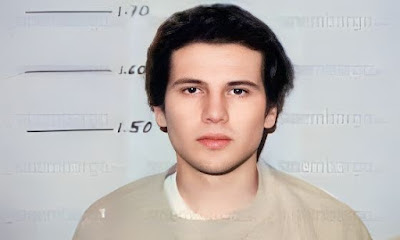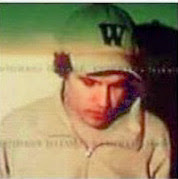Mica for cartelinsider.com
Welcome to "The Other JGL," a deep dive into the life of Joaquín Guzmán López, son of the infamous Drug Lord Joaquín Guzmán Loera, better known as "El Chapo." Previous Chapter 1
The Other JGL
Under the harsh, glaring floodlights of the notorious Altiplano maximum security prison, a pair of shadowy figures anxiously anticipated the release of Iván Archivaldo Guzmán Salazar, infamously known as 'El Chapito.' As soon as his silhouette materialized from the towering steel gates, they enveloped him in a rough blanket, swiftly spiriting him away in a nondescript gray Chevy Monza with license plates from the state of Mexico, disappearing as only seasoned narcos could.
In the gloomy predawn hours of Friday, April 11, 2008, 'El Chapito' savored his first taste of freedom since his imprisonment. Jesús Guadalupe Luna Altamirano, the presiding judge of the Third Unitary Court in Criminal Matters, ordered the release.
Contrary to the commotion following his release in 2005, this instance was eerily silent. Back then, federal agents had swooped in without delay, re-arresting and escorting him to the SIEDO facilities. However, this time, the lonely emptiness surrounding Altiplano was palpable, devoid of any hint of a federal operation.
Judge Luna Altamirano acquitted Archivaldo Guzmán of crimes linked to operations with resources of illicit origin, specifically the acquisition of assets and concealment of funds purportedly sourced from drug trafficking. The decision was reached after the Attorney General's Office (PGR) failed to provide compelling evidence to back its claims.
The crux of the case revolved around the alleged purchase of a vehicle valued at over 500,000 pesos through his cousin, Claudia Elenes Salazar. The PGR failed to provide convincing evidence that 'El Chapo's' son had utilized funds from illicit activities to purchase the vehicle. Furthermore, they couldn't establish a direct connection between two bank accounts containing less than 900,000 pesos and proceeds from drug trafficking.
This run of good fortune essentially started back in April 2004. At 20, Salazar was embroiled in a tragic incident outside a bar, where he fired shots at Canadian exchange student Kristen Deyell and Guadalajara local César Pulido.
The altercation was believed to have stemmed from Salazar's unreciprocated romantic interest in Deyell, which tragically escalated to a violent response when Salazar resorted to gunfire, targeting both Deyell and Pulido. He hastily retreated from the scene in his red BMW.
The Arrest
On a fateful Sunday around 3:30 AM, February 13, 2005, the Zapopan Municipal Police responded to a traffic accident involving three individuals in a red 2005 BMW X5 with license plates JDL-3597 on the road leading to Tesistan, near where two executed men had been discovered. The police reported that the individuals attempted to flee. Upon inspecting the flipped SUV, they uncovered a brick of cocaine and a loaded .45 pistol.
The vehicle was registered to the 20-year-old driver, Alejandro Cárdenas Salazar. The passengers were Javier González Reynoso, 23, and Alfredo Gómez Díaz, 20. As time would reveal, Alejandro Cárdenas Salazar was an alias utilized by Iván Guzmán Salazar, 'El Chapito,' and Alfredo Gómez Díaz was the nephew of the notorious Drug Lord' El Guero' Palma.
Iván Guzmán Salazar, the Drug Lord, was a wiry 20-year-old high school f--k up who had crashed his 2005 BMW X5 leaving a party - or a crime scene, depending on the narrative.
It took over a week to unveil the true identity of Iván Guzmán Salazar. The PGR received DNA confirmation from the United States corroborating samples taken by the PGR.
The saga of 'El Chapito' was set in motion in 2005 when a federal judge issued a warrant for his arrest. He was apprehended in Zapopan, Jalisco, on charges related to operations with resources of illicit origin.
When 'El Chapito' was first arrested, the crime was not serious, and his lawyer planned to get him released on bail, which took three attempts. Finally, as he was leaving the court wearing a blazer, he was re-arrested. Before he leaves, he is arrested, and that provides these mugshots.
The Inmate
Salazar's time in prison revealed more about his character through psychological and social examinations. On May 19, 2005, a social study was conducted at the South Prison, shedding light on the inmate's background, known as "El Chapito." Born on August 15, 1983, in Durango, "El Chapito" earned his nickname from the local community. At 21, he had completed high school and was working as a car welder while residing in Zapopan, Jalisco.
During the study, the inmate claimed his father was Joaquín Guzmán Loera, better known as "El Chapo," who was 48 years old. However, "El Chapito" denied having any information about his father's marital status, occupation, or place of residence, only mentioning that his father had completed primary school.
His mother was identified as Alejandra Salazar Hernández, a 47-year-old woman in the real estate industry. He also mentioned his siblings: César and Gisel, who were five and three years older than him, respectively, and Alfredo, who was three years his junior.
A social worker provided insights into the family dynamics:
"The primary family dynamic can be described as complex, fragmented, and functioning to a limited extent. According to the interviewee, his parents separated when he was 12, primarily due to his father's legal troubles. Ever since his father's dramatic escape from Puente Grande prison in Jalisco, the interviewee has been oblivious to his father's whereabouts. He recalled visiting his father in prison with his siblings and mother.
The mother assumed the primary role as the family's authority figure and provider, even though the inmate himself had a source of income. She provides him with a monthly allowance to cover his expenses. The relationships between the siblings and their mother appear to be positive.
During his 100 days of incarceration, the inmate received visits and both moral and financial support from his family. He stated that he has no knowledge of his father, receives no support from him, and has had no communication with him."
Iván Archivaldo failed the third year of elementary school in terms of education. He initially enrolled in a traditional high school. Still, he dropped out and later pursued education through an open high school, which he also discontinued following his arrest and subsequent imprisonment.
Regarding his employment history, he started working at 17 as a messenger for a law firm. From 2003 to 2005, he worked in a tin and painting workshop, as he mentioned in the interview. He claimed to have saved up to 40,000 pesos.
He stated that he spent his leisure time with his girlfriend and regularly consumed alcohol but did not engage in smoking or drug use.
On the same date as the social examination, May 19, 2005, a psychologist conducted personality studies on "Chapito."
The psychologist noted that the interviewee denied tattoos or scars but pointed out the presence of calloused hands. The psychologist also described his demeanor as anxious, suspicious, reserved, evasive, and displaying hidden hostility.
The inmate denied any drug use, psychiatric or neurological history. He stated that he was not undergoing any treatment or medication. His sleep pattern was normal, and he described his appetite as average. He claimed not to suffer from hallucinations or delusions and stated that his mood was stable.
Upon conducting psychological tests, it was estimated that the inmate had an average intellectual capacity. He demonstrated a certain degree of maturity in his thoughts and ability to make rational and logical decisions. His emotional status, however, showed instability, which could lead to aggression. He was also found to have low frustration tolerance and a tendency to manipulate situations to his advantage.
The psychological examination concluded that while the inmate had an average intellectual capacity, he demonstrated emotional instability and antisocial behavior. This behavior was believed to stem from his upbringing in a fragmented family, further complicated by his father's legal problems.
He was deemed capable of violence under certain circumstances, with a high probability of recurring aggressive behavior. The report recommended follow-up with psychological interventions to help manage his emotional instability and antisocial tendencies.
Post-Prison Life & Speculations
Emerging once more into the unpredictable realm of freedom, Iván leaves the imposing confines of Altiplano behind him. His stint in incarceration spanned 1,152 days - equivalent to three years, one month, and 29 days - a substantial portion of his 5-year sentence.
However, it's crucial to dispel the rumors: there was no covert agreement leading to "El Chapito's" release a mere three months post "El Mochomo's" capture, as Iván regained his freedom earlier, on April 11, 2005.
In a shocking turn of events, less than a month following "El Chapito's" discharge, his half-brother and popular figure Edgar Guzmán López, known as "El Moreno," fell victim to a brutal gang-style assassination involving a bazooka.
One can't help but wonder about the relationship dynamics between the López brothers and Iván before 2003. What about Dámaso López, Chino Anthrax, and Zambadas? This period started the golden error of the flashy narco on Instagram or Twitter. I could argue that this period quickly recruited a new generation of narcos.
The narrative resumes in May 2008, introducing another character to our unfolding drama: Joaquin Guzmán López.
Thanks for reading!
Mica












Dropping a comment to show support loved this article, loving this series.
ReplyDeleteThank you!
DeleteGreat job Mica glad you are active here. Do you have any idea who they are after today in Los Mochis?
ReplyDeleteThank you!
DeleteThe last report I saw, said it was over lab, but it must have been a high-value target at the lab.
It's not normal to conduct a lab raid with just a helicopter because they are unable to remove anything of significant.
Mica - I have always been really interested in whatever happened to Jorge López Pérez El Chuta & R1 Juan Reyes if either are still alive or what happened to them. Is there a possibility you might ever do an article on either? Here is a Reddit link that claims to be a more recent photo of R1 but it does not look like him https://www.reddit.com/r/NarcoFootage/comments/n0vhyk/allegedly_most_recent_photo_of_juan_reyes_mej%C3%ADa/?
ReplyDeleteShoot me an email, and I will add it to my list.
Delete